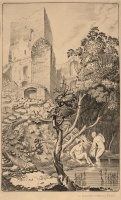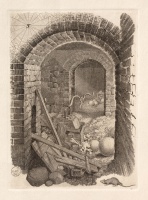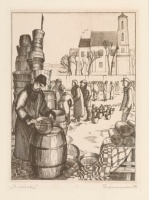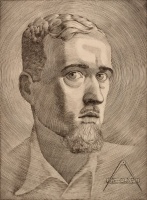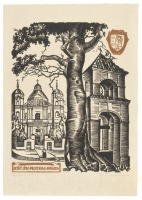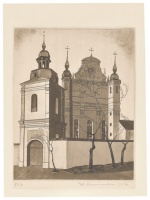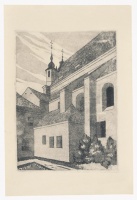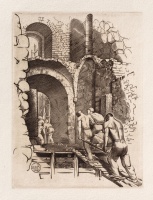
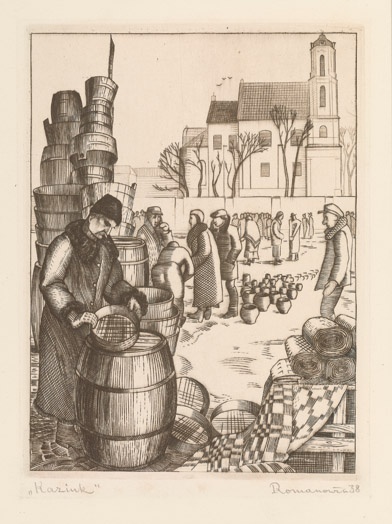

Kaziukas Fair
| Author: |
Walenty Romanowicz (1911–1945)  |
| Created: | 1938 |
| Material: | paper |
| Technique: | copper engraving |
| Dimensions: | 20 × 15 cm |
| Signature: | bottom left: "Kaziuk", bottom right: Romanowicz 38
|
Vilnius has long been famous for St Casimir and the St Casimir’s Day (Kaziuko) Fair, which attracts large numbers of people every year at the beginning of March. Dealers, craftsmen and peasants from nearby villages sell wooden artefacts, textile and ceramics. The fair used to take place in Cathedral Square, but after a monument to the Russian Empress Catherine II was put up there in 1904, it moved to Lukiškių Square beside the Church of St Philip and St James. The fair was also held here in the interwar period, by which time it was already seen as a longstanding tradition, at which students from Stephen Báthory University used to march in a carnival procession. The painter and graphic artist Walenty Romanowicz (1911–1945), a graduate of the Art Department at the university, depicted the folklore side of the fair in his engraving. The market is shown in full swing, with buyers and sellers. A peasant in the foreground with a sieve in his hands is selling wooden crafts, and rolls of patterned cloth are spread out nearby. On the left, a heap of goods, such as mortars, tubs, vats and sieves, rises like a reply to the majestic Church of St Philip and St James.
Text author Laima laučkaitė
A figure composition engraved by the Vilnius artist Walenty Romanowicz (1911–1945) combines at least two genres of art: the townscape and the still-life. The urban background indicates precisely the site of the fair. The stepped side-view of the Church of St Philip and St James shows clearly that the buyers and sellers are in Lukiškių Square. In this composition, the objects are just as important as the figures of people and the architecture: barrels, vats, rolls of homemade cloth piled up on a roughly made wooden platform covered with patterned fabric, and clay pots put down on the frozen ground. This gallery of household industry reveals the quantity of goods at the annual spring Kaziukas Fair. We can see exactly the same articles in works of art, on postcards and in photographs immortalising fairs, and in a film directed by the German director Wilhelm Prager about Polish Vilnius in 1936.
Text author Giedrė Jankevičiūtė
Source: Law firm Valiunas Ellex art album VILNIUS. TOPOPHILIA I (2014). Compiler and author Laima Laučkaitė, OBJECTS ON SHOW (2017). Compiler and author Giedrė Jankevičiūtė, KAUNAS–VILNIUS / 1918–1945 (2021). Compilers and text authors Dovilė Barcytė and Ieva BurbaitėExpositions: “Vilnius. Topophilia. Views of Vilnius from the collection of the law firm Ellex Valiunas”, 5 October – 26 November 2017, National Gallery of Art, Vilnius (curator Laima Laučkaitė); "1918-1945 / Kaunas-Vilnius", 27 August 2020 – 21 August 2021, Lithuanian Art Centre TARTLE (Užupio St. 40, Vilnius). Curators Dovilė Barcytė and Ieva Burbaitė.







